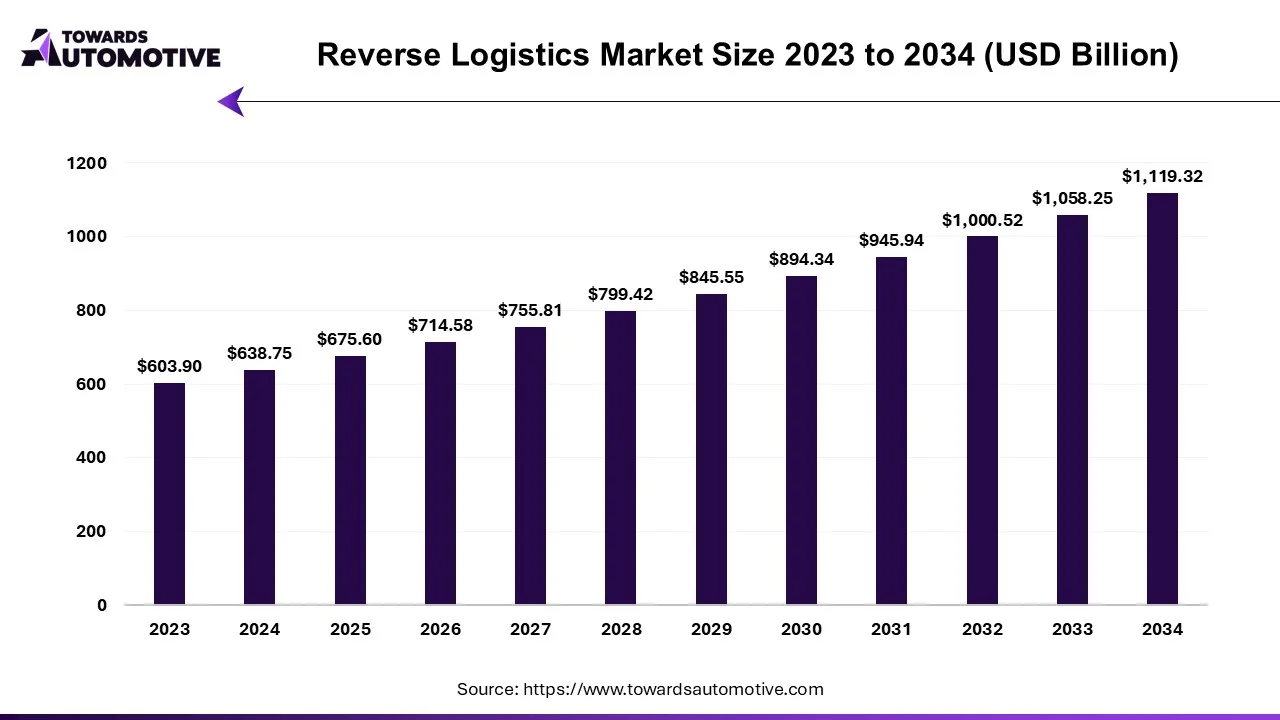The global reverse logistics market is experiencing significant growth, driven by evolving consumer behaviors, technological advancements, and sustainability initiatives. The market size is calculated at USD 638.75 billion in 2024 and is expected to be worth USD 1119.32 billion by 2034, expanding at a CAGR of 5.77% over the next decade. As businesses around the world focus on enhancing their supply chains, the demand for efficient reverse logistics systems is surging. Key regions—North America, Asia-Pacific (APAC), Europe, Latin America (LA), and the Middle East and Africa (MEA)—are seeing distinct trends and drivers that shape the market’s growth in these areas.

Download statistics of this report @ https://www.towardsautomotive.com/download-statistics/1137
North America: Market Leader in Reverse Logistics
In 2023, North America dominated the reverse logistics market, fueled by the rapid growth of e-commerce, a focus on supply chain optimization, and increasingly consumer-centric return policies. The e-commerce boom, particularly in the United States and Canada, has led to a significant rise in product returns. Consumers now expect seamless, hassle-free return processes, which has reshaped how businesses approach reverse logistics. Offering smooth return experiences has become a critical factor in driving customer satisfaction and fostering long-term brand loyalty.
The market in North America is also driven by businesses investing heavily in efficient reverse logistics systems to manage the large volume of returns. Companies are increasingly focused on supply chain optimization, aiming to recover value from returned goods by reselling, recycling, or refurbishing products. This not only helps improve cost efficiency but also aligns with the growing emphasis on sustainability, reducing waste across the supply chain. Flexible and lenient return policies further enhance customer loyalty by creating positive shopping experiences that encourage repeat business.
With these factors continuing to evolve, reverse logistics has become an essential part of North America’s e-commerce and retail sectors. This combination of e-commerce growth, supply chain improvements, and customer-focused return strategies has firmly positioned North America as a leader in the reverse logistics market.
Asia-Pacific: Highest Growth Potential
The Asia-Pacific (APAC) region is expected to grow at the highest CAGR during the forecast period, driven by several key factors. Consumer expectations for convenient and hassle-free returns are rapidly evolving, particularly in e-commerce. As online shopping continues to surge across countries like China, India, and Japan, businesses are under pressure to enhance their reverse logistics capabilities to meet these new demands.
The healthcare sector is also contributing significantly to the market’s growth in APAC. With a booming healthcare industry, there is a growing need for managing returns, recycling, and the disposal of medical devices, pharmaceuticals, and health-related products. As emerging economies in Asia, such as India and China, expand their healthcare sectors, proper reverse logistics practices will become increasingly important to ensure compliance with safety regulations and manage product recalls or expired products.
Furthermore, regulatory compliance is pushing businesses in the region to adopt more sustainable and responsible reverse logistics practices. In countries like Japan, South Korea, and India, stringent regulations require companies to manage product returns and waste disposal in an environmentally friendly manner. This regulatory pressure, along with growing consumer demands and the healthcare sector’s specific needs, is driving substantial growth in the APAC reverse logistics market.
Regional Comparison: Other Key Markets
While North America and APAC dominate the reverse logistics landscape, Europe, Latin America (LA), and the Middle East and Africa (MEA) regions also play key roles in the market.
- Europe is seeing steady growth, driven by the shift toward a circular economy where reverse logistics plays a critical role in recycling and product refurbishment. Stringent environmental regulations are encouraging businesses to adopt reverse logistics practices that reduce waste and promote sustainability.
- Latin America (LA) is starting to experience increased demand for reverse logistics services as the e-commerce sector continues to grow. Urbanization, rising disposable income, and better access to online shopping are contributing to the need for more efficient return processes. Although not as advanced as North America and APAC, LA is witnessing a steady rise in reverse logistics adoption.
- The Middle East and Africa (MEA) regions are seeing more gradual growth in reverse logistics adoption. While the demand for efficient return systems is rising, particularly due to the growth of e-commerce, the region is still in the early stages of embracing advanced reverse logistics solutions. As businesses focus on improving customer service and meeting sustainability goals, reverse logistics will continue to gain traction in MEA.
Key Players Profiled in the Reverse Logistics Market
- Ecom Express Limited (India)
- DB Schenker (Germany)
- FedEx Corporation (U.S.)
- United Parcel Service, Inc. (U.S.)
- Kuehne + Nagel International AG (Switzerland)
- Yusen Logistics Co., Ltd. (Japan)
- Kintetsu World Express Inc. (Japan)
- Safexpress Pvt. Ltd. (India)
- XPO Logistics, Inc. (U.S.)
- DHL Express (Germany)
Buy the ready report now @ https://www.towardsautomotive.com/price/1137
You can place an order or ask any questions, please feel free to contact us at sales@towardsautomotive.com
Explore the comprehensive statistics and insights on automotive industry data and its associated segmentation: Get a Subscription
For Latest Update Follow Us: https://www.linkedin.com/company/towards-automotive
